If you do one thing today, go to the Kickstarter project for Unforgettable: Bold Flavors from A Renegade Life, the biographical cookbook on Paula Wolfert's life.
UPDATE: Friday, July 10th (till 10pm EDT) is the last day to support the Kickstarter and get in on the rewards!

"Paula is the most influential cookbook writer you may have never heard of," according to food writer Emily Kaiser Thelin, part of the team working to create Unforgettable, the biographical cookbook on Paula Wolfert's life. Since Wolfert was diagnosed with (and became an advocate for) Alzheimer's disease three years ago, a talented group—a writer, a photographer, a designer, and a fellow cookbook author—have come together to produce the book through a Kickstarter, in a scrappy style fitting of Wolfert's fierce can-do spirit.
The lucky among us are already cooking, reading, and reinterpreting Wolfert's work—see Alice Medrich's Fragrant Oranges with Ice Cream, Almonds, and Dates and Tom Hirschfeld's Braised Cabbage—it is offically time for the rest of the food-loving world to catch up.
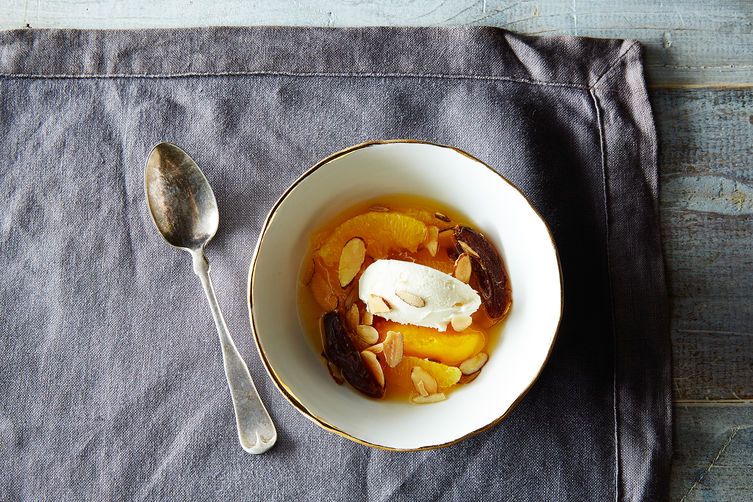
Her influence is made all the more clear when you see how often community members cite her in answers on the Food52 Hotline. In questions about everything from what to do with preserved lemons to the best oxtail recipes to freezer cooking, the ingredients and techniques Wolfert has taught us are always front of mind.
After I wrote about her herb jam as a genius, unpretty but delicious way of using up the herbs and greens lingering in your crisper drawer, Wolfert sent me her 10 Tips for Preparing Moroccan Food, as featured in her most recent cookbook The Food of Morocco. Below you'll find them in their entirety, and I suggest you read every word.
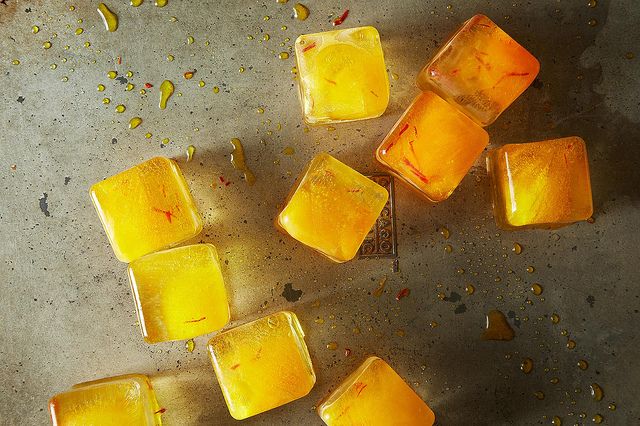
10 Tips for Preparing Moroccan Food
by Paula Wolfert
1. Making and Preserving Saffron Water
If you’re planning on doing some intensive Moroccan cooking, do as many Moroccan cooks do, and prepare a small jar of saffron water. This form of saffron is economical, and it brings up more of this spice's aroma and flavor than simply adding a few strands. In fact, I’ve discovered that if I soak all the ground spices called for in a recipe in a little saffron water before adding them to the dish, the moistening intensifies and better distributes their combined flavors. See our full tutorial on making saffron water here.
2. Quick Golden Glazed Onions as a Base for Tagines and Soups
A good way to to start a soup, stock, or tagine is by steaming and glazing roughly chopped onions before adding the remaining ingredients. My procedure is to toss the chopped onions in salt (which will draw out their moisture when they are heated), then place them in a tagine bottom, adding a little water and oil and covering them—a good way to slowly heat up your tagine and at the same time soften the onions and develop flavor. After the onions turn soft, I remove the cover, raise the heat a bit and cook them until golden, creating a tasty base in which to cook the other ingredients.

3. Why and How to Grate an Onion
Moroccan cooks often use grated onions as a base for a creamy tagine sauce, as a stuffing for vegetables, or as or a pastry filling. Grating is easily accomplished by rubbing the cut side of an onion along the large holes of a four-sided box grater. The gratings are then rinsed to reduce pungency, and then drained. This procedure is quick and helps the grated onion dissolve rapidly in a slow-simmered dish.
For larger amounts of grated onions, I use the food processor, being careful not to completely mash them. To grate onions for future use: Peel, quarter, and then process one large onion at a time. Rinse, press dry and divide into 1/2 cup-capacity balls. Wrap in freezer paper, and keep frozen until needed. Note that often a Moroccan cook will add more onions, thinly or thickly sliced, to a tagine when it is half cooked to give additional heft.
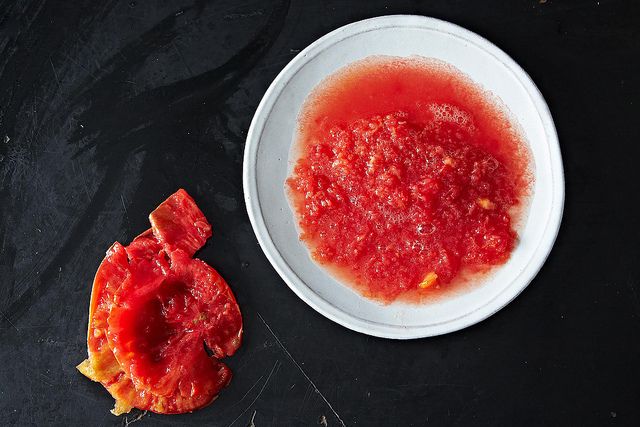
4. How to Grate a Tomato
I’m convinced that the best tomatoes for grating are large Romas: They have few seeds, not too much juice, and once one of the ends is cut off, they can be very quickly grated. Place the cut side facing the coarsest side of a four-sided box grater or a flat shredder set over a bowl. Rub the tomato in only one direction. You should be left just with tomato skin in your hand, which is a good protection from cuts.

5. How to Preserve, Finely Chop, and Freeze Parsley and Cilantro
When I lived in Morocco, the women didn’t have chopping knives and large work boards. Their workspace was the size of a milk crate and cutting was done with a small paring knife. When a cook wanted finely chopped herbs, she ground them to a pulp in a copper mortar, reducing a good handful of fresh leaves into a mere two packed tablespoons. And the flavor of the herbs pulped this way was always more intense than that of herbs that had been cut fine with a knife.
I found that if I used a food processor to grind the parsley and cilantro leaves, I obtained similar texture and flavor. Also, I could freeze my washed, squeezed-dry, and processed ground herbs in small bundles for use only in soups and tagines (though not in fresh salads or for garnish). Parsley and cilantro sprigs will stay fresh for about 10 days. I pack them stem-side-down in a bowl of water, cover with a plastic bag, and keep in the refrigerator.
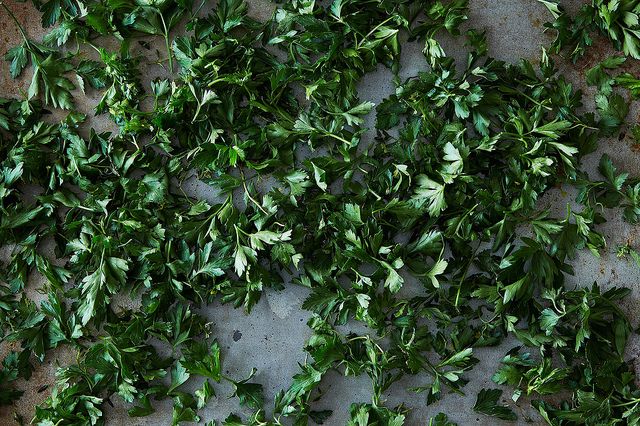
6. Why It Isn't Necessary to Toast Real, Imported Moroccan Cumin Seed
Moroccan cumin seeds are so strong that toasting them will result in "overkill." Also, it's best to grind them just before using. I have watched experienced Moroccan cooks grind cumin seed with a pinch of coarse salt to the consistency of sand using the heel of one hand against the palm of the other. A mortar and pestle does a good job, too!
7. Why You Can Purchase Couscous at the Supermarket
There's couscous sold out of sacks in health food stores, and there’s 100% semolina couscous sold in most supermarkets. Nearly all commercially-sold 100% semolina couscous, whether labeled "instant" or not, is virtually the same, since all factory-made couscous is partially precooked. Artisanal sun-dried couscous is available in limited quantities too.
8. Sealing the Top and Bottom Parts of the Couscous Cooker
Christine Benlafquih of moroccanfood.about.com gave me this tip: Place a strip of twisted aluminum foil along the rim of the bottom pot. Set a colander or steamer on top and tuck in the foil between the pot and steamer. This will create a seal, so that steam will rise only through the steamer holes. Please remember that your colander or steamer should not make contact with the broth or water below.
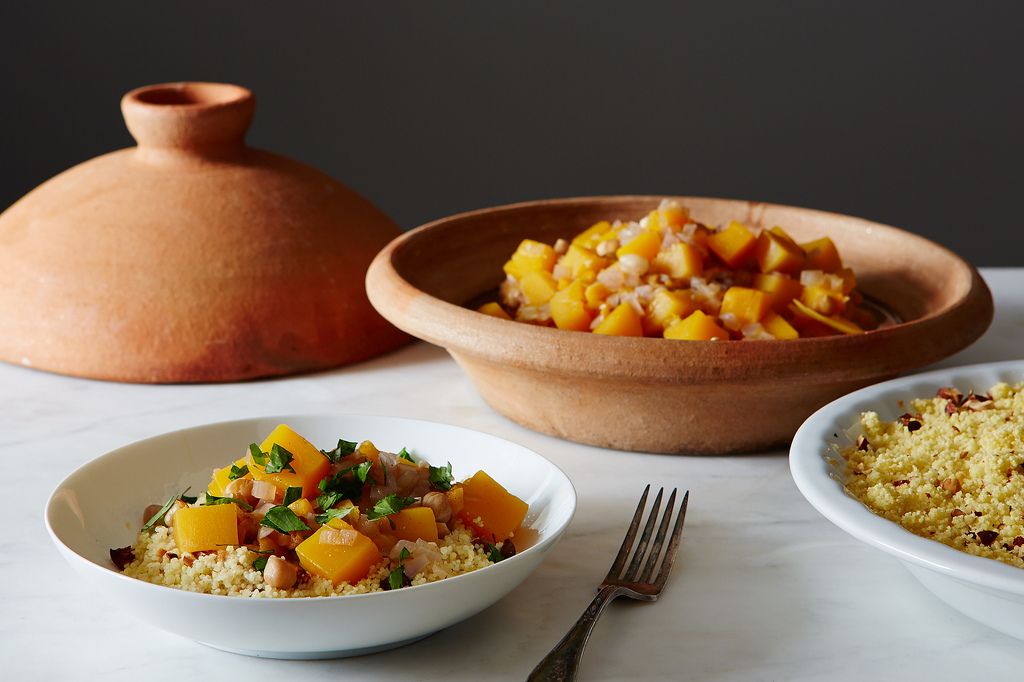
9. Why Moroccan Cooks Steam Pasta, Fruits, Vegetables, Couscous and Other Grains for Soups, Salads, Main Courses, and to Garnish Tagines and Stews
A colander set snugly over a tall pot of boiling water is all you need to steam couscous. It’s really that simple in that it is the steam that helps to create the incredible lightness of the grain. But steaming is not only used to cook couscous—it is a very important procedure in Moroccan cooking that preserves shape, color, taste, and vitamins.
Fruits such as quince, apples, and pears that are first steamed then caramelized in a pan with butter and sugar or honey, will turn silky and soft, but will hold their shapes when added to a tagine or placed on top of a couscous. Steaming pasta, rice, or thin pancakes is a revelation. The same goes for turnips, eggplants, carrots, sweet potatoes, and butternut squash, all first steamed before being transformed into cooked vegetable salads, or glazed and added to tagines or couscous.
Just as steamed starches, fruits, and vegetables keep their original flavors, so do steamed chicken and lamb. Both should be eaten the moment they are ready; if left too long, they will dry out.
10. How to Peel and Cook Chickpeas
Many Moroccan recipes call for fresh peeled chickpeas, which taste better and are more easily digested than when left unpeeled. Soak dried chickpeas overnight for at least 10 hours, drain, and spread the chickpeas in a single layer on a cloth kitchen towel. Cover with another towel. Then, using a rolling pin, firmly (but not heavily) roll it back and forth over the chickpeas about ten times. Almost all the peels will roll off.
Meanwhile, bring a pot of water to the boil, throw in the chickpeas and boil for 10 minutes. Remove from the heat and let sit for a few minutes. The remaining peels will rise to the surface. Remove them with a skimmer, then continue cooking the chickpeas as directed in the recipe.
If peeled in advance, drain and store in the refrigerator for a few hours, or completely cook, then store for a week in the cooking liquid. You can also freeze chickpeas in their cooking liquid.
What are you favorite Paula Wolfert recipes, books, and tips? Tell us in the comments.
For more of Paula Wolfert's wisdom, check out the Kickstarter project for Unforgettable, the biographical cookbook on her life.










See what other Food52 readers are saying.